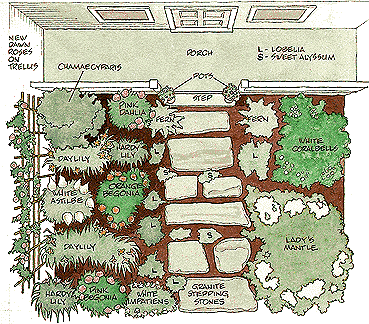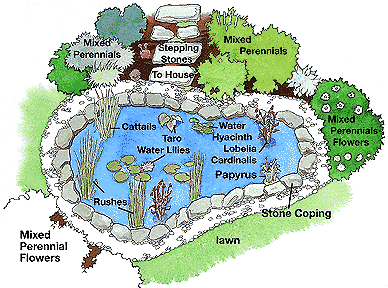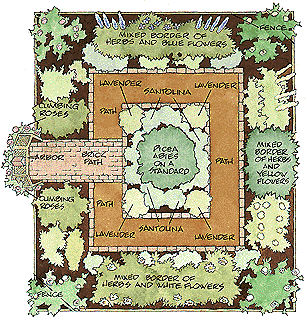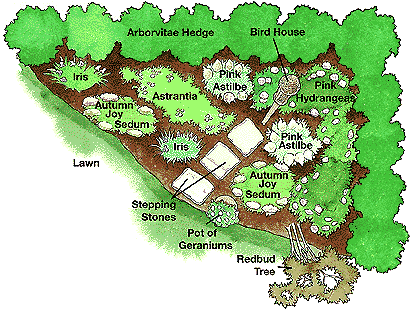
Entry Garden
Establish a strong focal point at both ends of a front yard walkway with shrubs or mounding perennials. Dwarf conifers, clumps of ornamental grasses, or a well-pruned hydrangea will provide interest.
continue reading below

What you choose to grow along your front path will set the tone for your entry garden. For a formal look, cultivate a healthy lawn and edge the walkway with a closely-clipped boxwood hedge. To imitate a colorful, old-fashioned garden, replace lawn with thickly planted perennial borders and line the walkway with a creeping groundcover, such as mint or thyme.
Water Garden
Planning a water garden is a lot like planning a traditional flower border. First, you need to make sure your water garden is located where it will receive at least six hours of direct sunlight a day. Then, you must choose a variety of plants that complement each other in color, height, and bloom time.

Water plants are generally divided into four groups: oxygenating, bog, floating, and water lily. Of these, oxygenating plants such as anacharis, water milfoil, or cabomba are probably the most important because they provide oxygen for aquatic animals and compete with algae for the available carbon dioxide. Plant oxygenators at the bottom of your pond. Bog plants such as Lobelia cardinalis, papyrus, and cattail add interest, color, and height to your pool. They prefer to grow in the shallow water along the edge of the pond. Duckweed, water lettuce, and floating fern will all float on the surface of the water, helping to shade the pool and keep algae at bay. Water lilies are the crown jewels in any pool. Plant them 6 inches below the surface.
Herb Garden
Who can resist the aromas and soft-spoken colors of an herb garden? If you have found yourself captivated by the idea of garden-fresh spices and drying your own harvest of herbs, then it’s time to tackle designing an herb garden.
<br clear="all

To start, you’ll need to locate a sunny spot that drains well. If your yard is filled with shade, you can still grow herbs. Use containers that can be moved into patches of sunlight. Choose your herbs based on your interests. If you’re an avid cook, you’ll want to grow culinary herbs such as sage, fennel, or basil. You can also design an herb garden that’s a fragrant hideaway, especially when you plant drifts of lavender, spearmint, or scented geraniums. For home remedies, plan to cultivate some of the old-fashioned medicinal herbs such as chamomile, lemon balm, or comfrey.
Wildlife Garden
Birds and butterflies will flock to your yard when you plan your garden with their needs in mind. If you’re short on space, even a tiny garden corner can become a miniature wildlife refuge.

Before you plant, though, it’s wise to do some research. Find out what birds or butterflies are native to your area, and plant with their needs in mind. If hummingbirds live nearby, be sure to plant bright tube-shaped flowers such as trumpet vine, red salvia, or bee balm. Butterflies enjoy buddleia, zinnia, parsley, tithonia, and sedum. To lure songbirds, add seed and berry producing flowers, shrubs, vines, and trees to your plan.
SOURCE:http://www.bhg.com/gardening/landscaping-projects/landscape-plans/great-garden-plans/